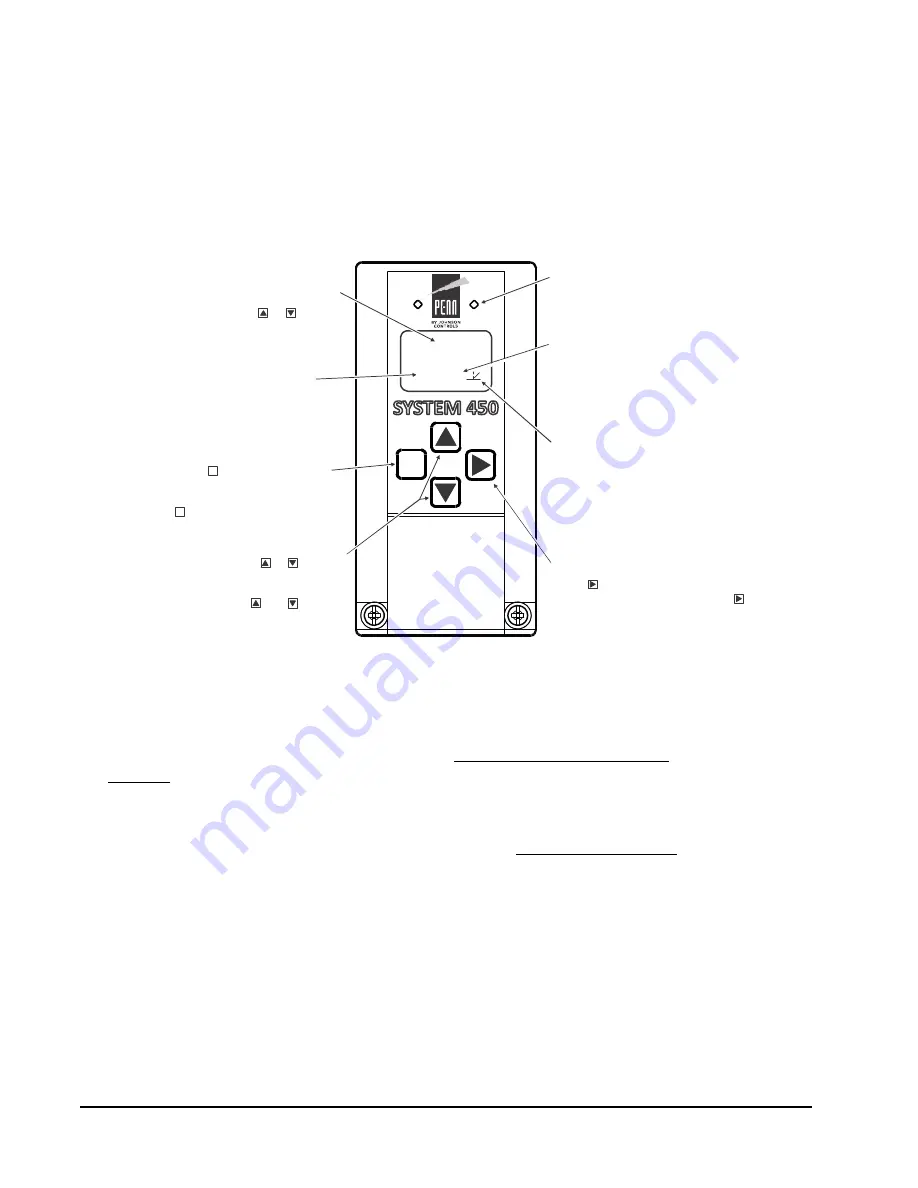
System 450™ Series Modular Control Systems with Standard Control Modules Technical Bulletin
10
Control Modules and User Interface
Each System 450 standard control system requires a single control module.
System 450 control modules have an LCD that enables you to set up and monitor
your control system, along with a four-button touchpad for navigating the control
system status and setup screens, and setting up the system parameters. Figure 2
shows a standard control module and describes the various features of the
System 450 control system UI for standard control modules.
Standard System 450 control modules are available with one or two relay outputs
or with one or two analog outputs and the standard System 450 firmware. See
Table 11 on page 62 for model descriptions and
on page 9 for more information.
The System 450 control module with hybrid analog output has a single analog
output that can be configured as a hybrid analog output to optimize and extend the
controlled speed range of variable speed EC motors. See
All System 450 control modules can control both relay outputs and analog outputs,
regardless of the type of outputs that the control module has onboard. You set up
all of the sensors and all of the outputs (relay and analog), including the expansion
module outputs, in the control module UI. A standard control module can also be
configured as a simple stand-alone control system when your application requires
only one or two relay outputs, or one or two analog outputs.
Figure 2: System 450 Control Module with Analog Outputs Showing LCD and
Four-Button Touchpad User Interface
M
100
OSP
4
Output Number:
Displays a numerical
value that identifies the output associated
with the status or setup value shown
on the screen. Output numbers are
automatically determined by the outputs'
physical positions (left to right) in the
module assembly. (Here, 4 = Output 4.)
Control Ramp Icon:
Displays whether an
analog output (only) is set as direct acting
or reverse acting, and whether the output
signal strength is at minimum or maximum
when the sensed property is at Setpoint.
The control ramp icon displayed is
determined by the output's SP, EP, OSP,
and OEP setup values.
Menu Button:
Press to move through the
sensor and output setup start screens.
When moving through the status or setup
screens, press to return to the status start
screen or setup start screen.
M
M
Status or Setup Identifier:
or
OSP
Displays the
unit of measurement, output, sensor number,
setup parameter for the displayed status or
setup value. (Here, the setup identifier
represents % output signal strength at setpoint.)
Up and Down Buttons:
Press or to select
a different value for any flashing value in the
setup value field. In the Main (sensor status)
screens, press and hold both and for
5 seconds to access the Setup Start screens.
Status or Setup Value:
or
Displays the current
input status, output status setup parameter
value for the displayed input sensor, output
and/or setup parameter.
select
a different parameter value when the value
is flashing. (Here, 100 = 100%.)
Press or to
LED:
Green LEDs on Control Module and
Expansion Modules indicate if the associated
relay or analog output is on or off. If the analog
output is partially on (between 0 an 10V), the
LED blinks. The higher the output signal
strength, the longer the LED is on.
F
IG
:s
y
s4
5
0
_
co
mm_
mo
d
u
le
_
u
i
Next Button:
In the Main screens,
press to scroll through the system status
screens. In a setup screen, press to save
the (flashing) setup value and go to the
next setup screen.

























